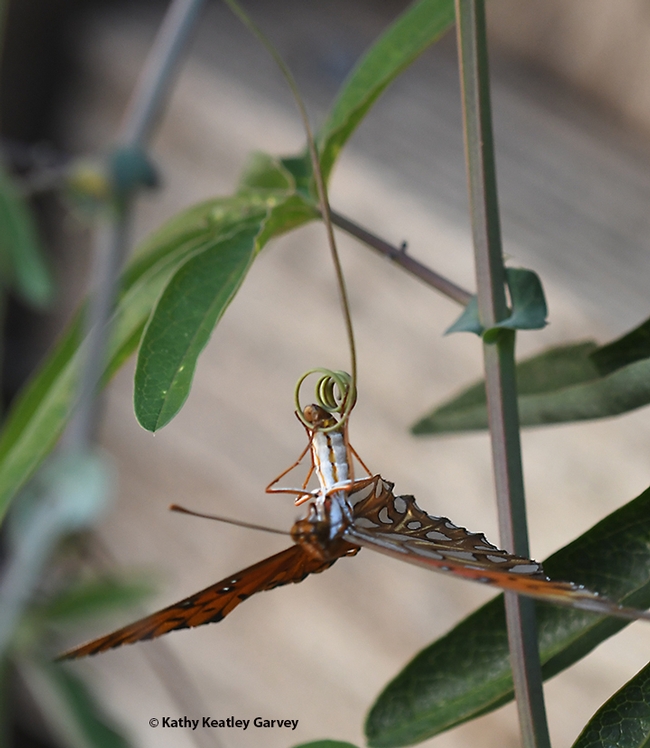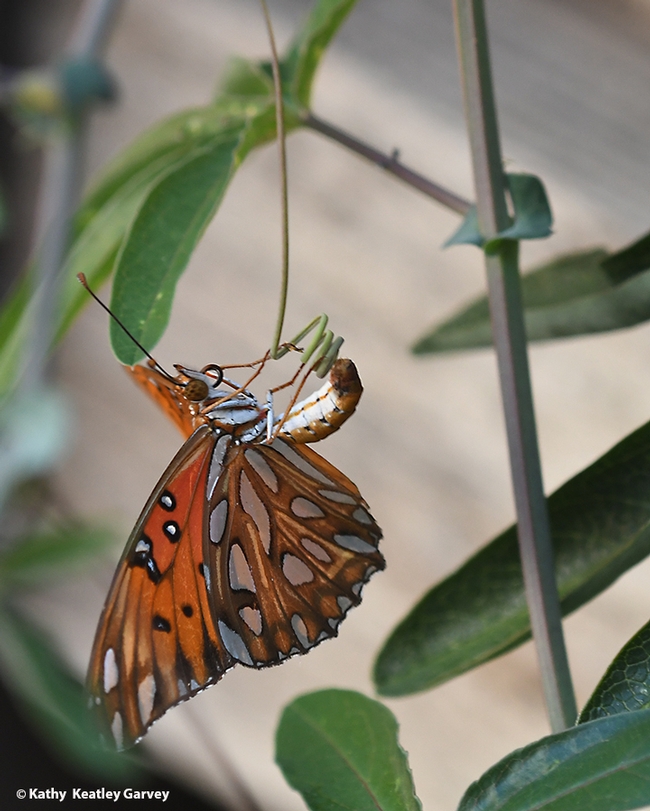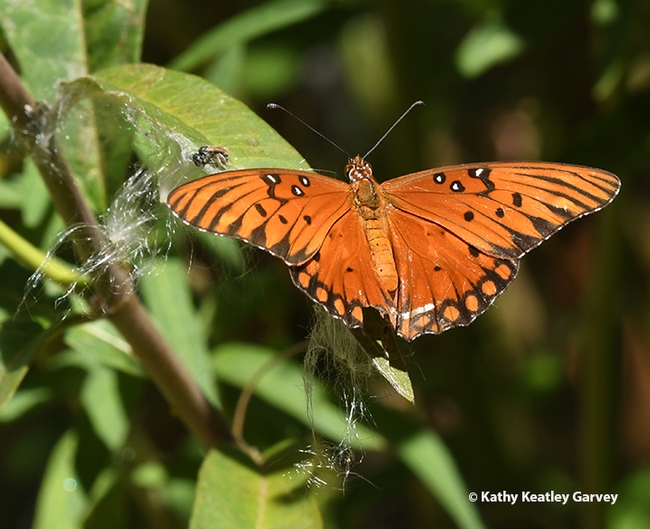- Author: Kathy Keatley Garvey
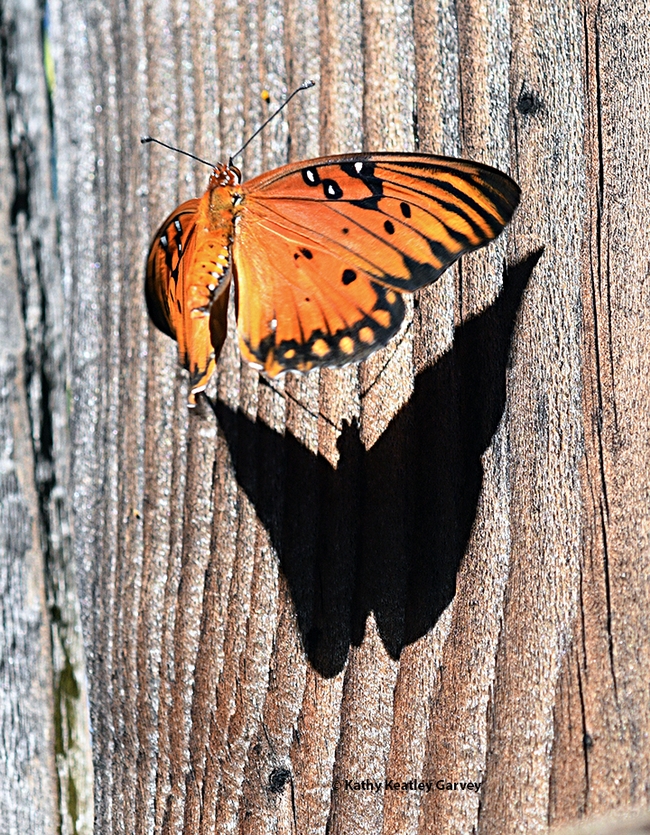
The shadow knows, but what does it know?
It knows to follow.
It follows the Gulf Fritillary--a brightly colored orange and black butterfly with silver-spangled wings--up a fence in Vacaville, Calif., and vanishes.
That's what butterflies and shadows do--they vanish.
If you're growing passionflower vine (Passiflora), you've probably photographed the Agraulis vanillae egg, the caterpillar, the chrysalis and the adult.
But its shadow?
Have you photographed its shadow, that dark silhouette intercepting rays of light?
The shadow knows, but what does it know?
It knows to follow.
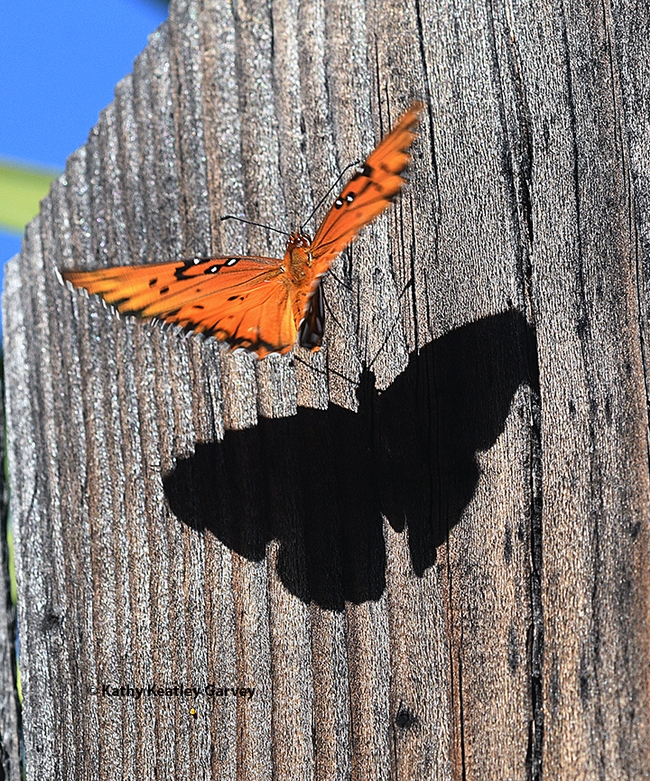
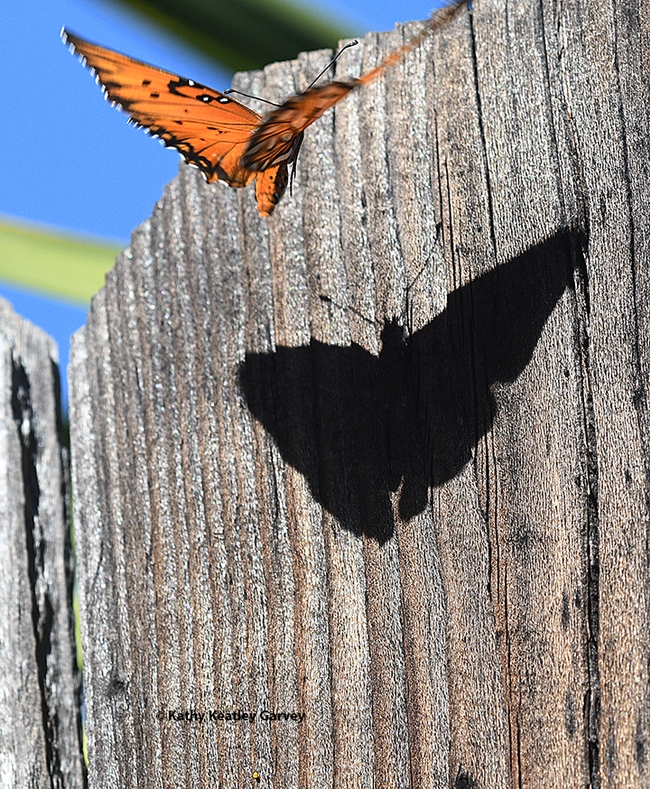
- Author: Kathy Keatley Garvey
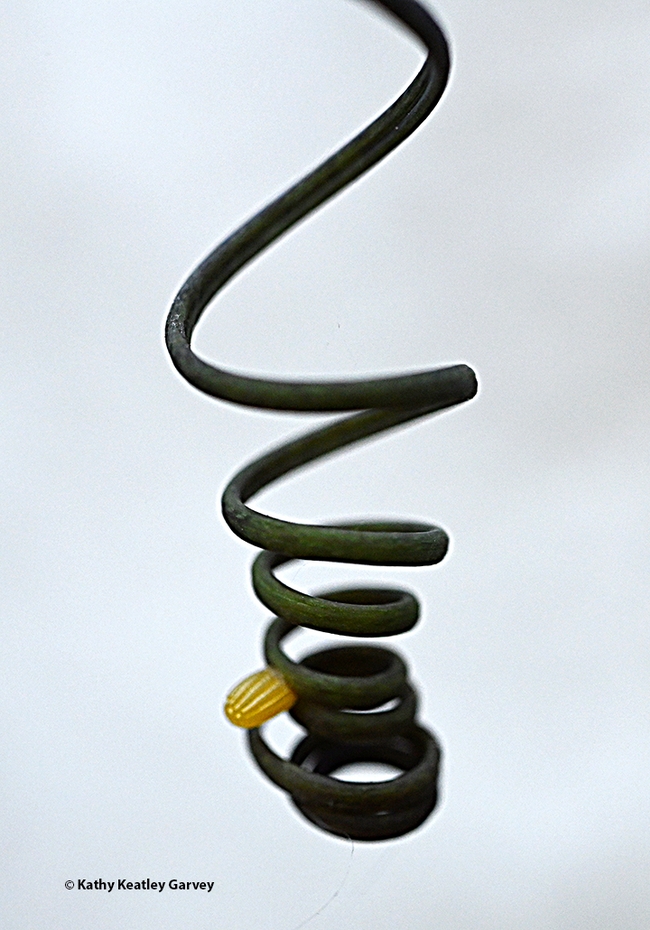
The Gulf Frit, or "passion butterfly" (Agraulis vanillae), lays her tiny, yellow eggs, singly, on her host plant, the passionflower vine (Passiflora).
The egg? It's about the size of a pin head. Look closely and you'll see it's ridged like the raised lines of sand or a miniature ear of corn.
Often a Gulf Frit will deposit her egg on a tendril, which looks like a cork screw gone ballistic. Sometimes she'll lay her egg on a leaf, a bud, a stem or a nearby wall, gate or fence. Mama, how can we find our way?
We've grown Passiflora in our garden in Vacaville for decades. Some seasons the 'cats will skeletonize the plant, eating everything--from the leaves and blossoms right down to the stems.
Some gardeners refuse to plant the passionflower vine because a stripped plant makes them look like "a bad gardener." They have been known to pluck off the hungry 'cats to "save" the plant.
We let nature take its course. Butterflies mate, eggs hatch, caterpillars crawl, chrysalises form, and the cycle starts all over again. An egg is the promise of a new generation.
Last year the predators, including California scrub jays, praying mantises, spiders, yellowjackets and European paper wasps, grabbed their share of the 'cats.
This season, no. The scrub jays have, for the most part, vanished. Hey, look at that hawk circling our yard! The praying mantises are gone. And we haven't seen a yellowjacket, European paper wasp or spider for weeks.
It's a good year for the Gulf Frits! And a bad year for the passionflower vine... It is about to be skeletonized.
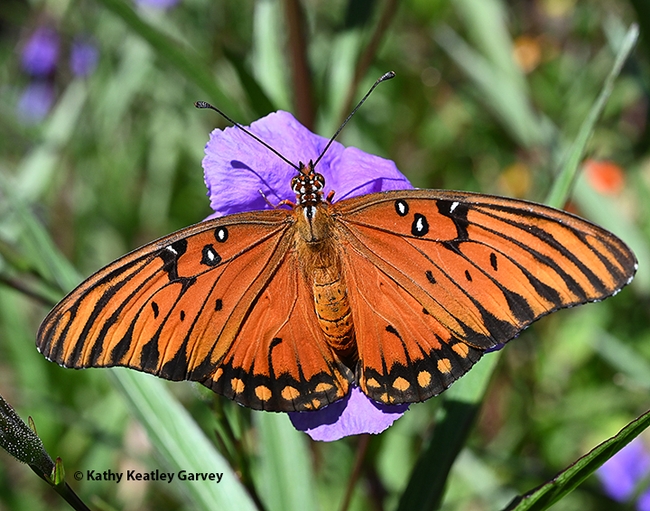
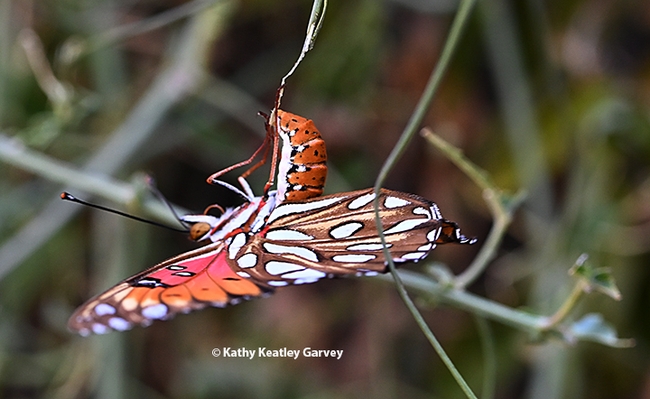
- Author: Kathy Keatley Garvey
It's always a good idea to carry your cell phone or shoulder a camera while you're taking a stroll through a garden.
You never know what you will see.
It was early morning on Tuesday, June 7, when we spotted a female Valley carpenter bee, Xylocopa sonorina, asleep on a passionflower vine, Passiflora. That's the host plant for the Gulf Fritillary, Agraulis vanillae, but carpenter bees are always hanging around for pollination. Tiny grains of golden pollen cling to this bee look like gold dust.
The females are solid black, while the males are a golden blond with green eyes. Sexual dimorphism. These bees are found in the Central Valley and southern California, Arizona, New Mexico and southward through Mexico, according to the late native pollinator specialist Robbin Thorp, UC Davis emeritus professor of entomology. He described them as "the largest of the carpenter bees in California."
Wikipedia indicates Valley carpenter bees are found from western Texas to northern California, and the eastern Pacific islands. Frederick Smith, assistant in the Zoological Department of the British Museum and member of the council of the Entomological Society of London, first described X. sonorina in 1874 from specimens collected in Hawaii, according to Wikipedia. "Until 1956, it was thought that X. sonorina came from the Sunda Islands, but in a paper published that year,M. A. Lieftinck showed that Smith's interpretation of the original specimen labels was in error: Smith had mistakenly read the label of X. sonorina as meaning the Sunda Islands instead of the Sandwich Islands."
"In 1899, R. C. L. Perkins described the same species as Xylocopa aeneipennis, and in 1922, P. H. Timberlake claimed that the Hawaiian Xylocopa was the same as the mainland X. varipuncta, that had been named in 1879, and Roy Snelling predicted in 2003 that X. varipuncta would eventually be reclassified as a synonym of X. sonorina," Wikipedia relates. "This was confirmed in 2020 using DNA analysis, and as the name sonorina has seniority, this is the valid species name."
Up until 2020, we'd always called them X. varipuncta.
This week we called one "sleepy head."
Ms. Valley Carpenter Bee finally stirred and soon after, took flight.

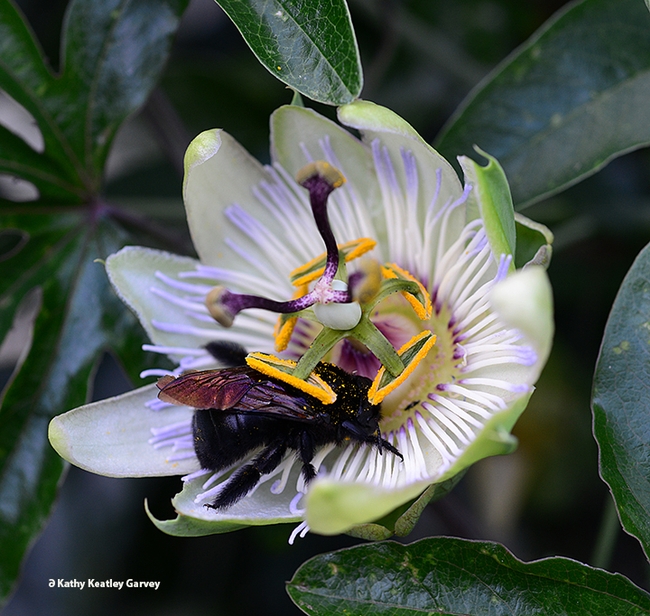
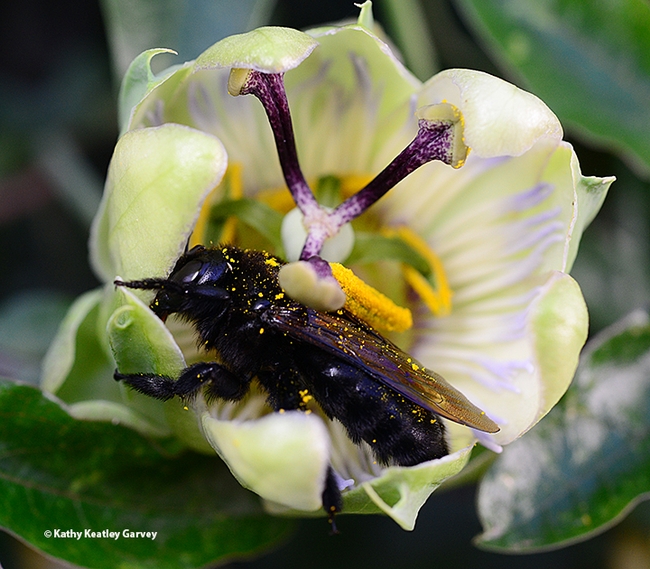
- Author: Kathy Keatley Garvey
One point about insect wedding photography is that you don't need an invitation to attend. You just have to keep your distance and not disturb the bridal couple. No sudden movements. No stressful impatience. And no camera flash, please.
It helps, though, if you grow the host plant so a bride and a groom will show up. In this case, we grew passionflower vine (Passiflora), the host plant of the Gulf Fritillaries (Agraulis vanillae).
One morning we saw a butterfly eclose from her chrysalis. Wedding Day! Within minutes, a male suitor arrived.
They became a couple.
Then unexpected guests arrived...a hungry caterpillar munching on the leaves and a second prospective suitor (PS) (rejected) and a third PS (rejected) and a fourth PS (rejected).
PS, leave them alone!
When the "ceremony" ended, the couple simply left. One sipped nectar from the nearby Mexican sunflower, Tithonia rotundifola. The other flew over the fence.
Soon we'll have more eggs, more caterpillars, more chrysalids, and more adults.
Life is like that when you're growing Passiflora and hoping for a Wedding Day.
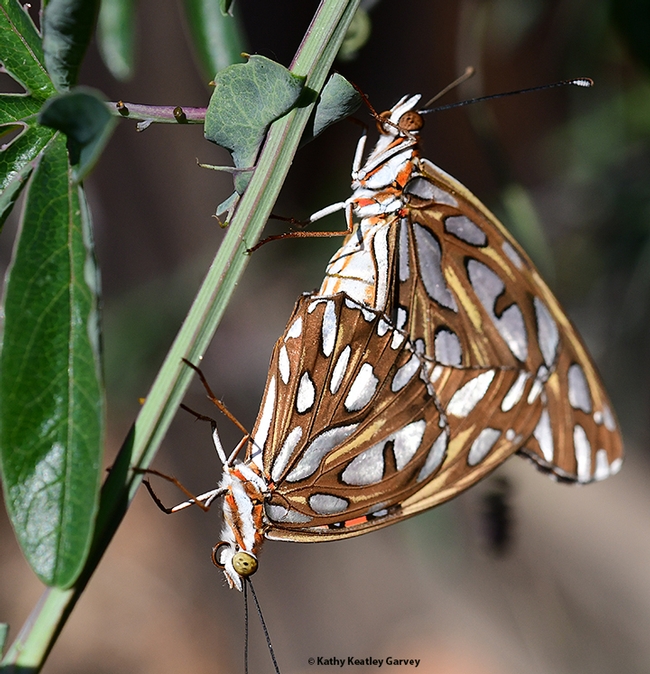
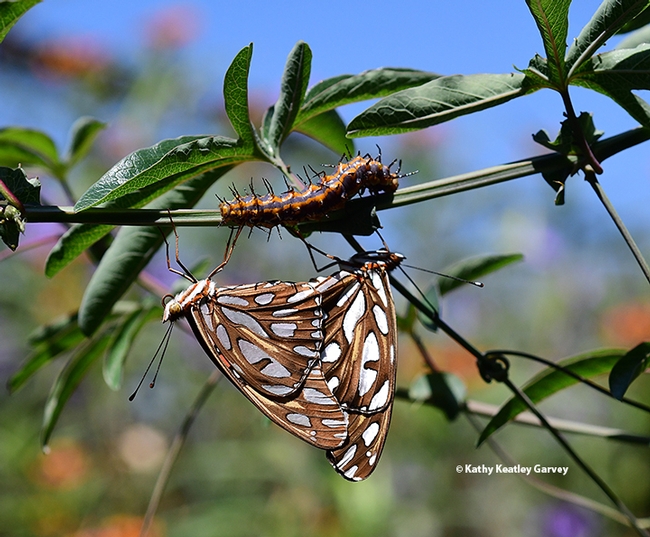
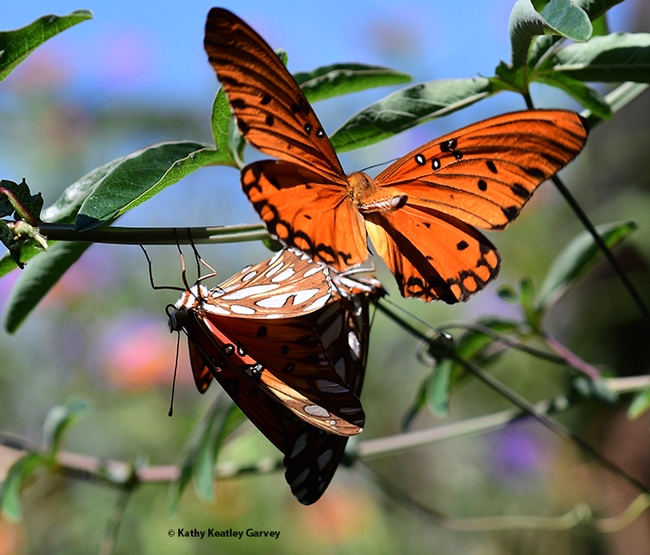
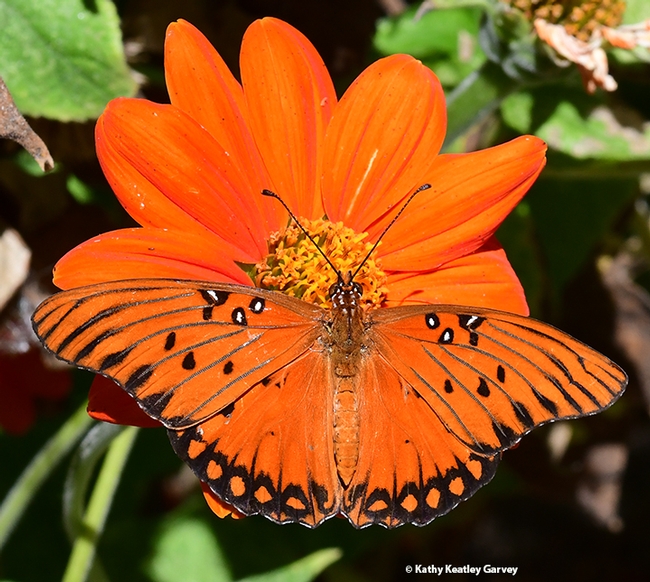
- Author: Kathy Keatley Garvey
You know the drill, lay 'em on the tendrils.
But Gulf Fritillary butterflies, Agraulis vanillae, don't always lay their eggs on the tendrils of their host plant, the passionflower vine (Passiflora) although textbooks may indicate that.
We've seen Gulf Frits lay eggs on and under the Passiflora leaves, on the stems, on the blossoms, and on nearby fence posts and screen doors.
Hey, Gulf Frits, are you trying to tell us something? Don't you like the accommodations?
But the other day, we saw a Gulf Frit executing acrobatic moves to deposit an egg on a tendril. A little breakdancing, Lindy hopping, pole-climbing, scooting, rolling, hooping and juggling--and she's done.
The egg is tiny, bright yellow and pinpoint in size. It will probably hatch, but the larva or caterpillar may not make it.
Currently we have several California scrub jays enjoying an all-you-can-eat caterpillar buffet every morning. They sit on the fence, swoop down, grab a 'cat, and look for more.
There's always food in a pollinator garden. A Cooper's hawk that hangs out in the birdbath knows that, too.
